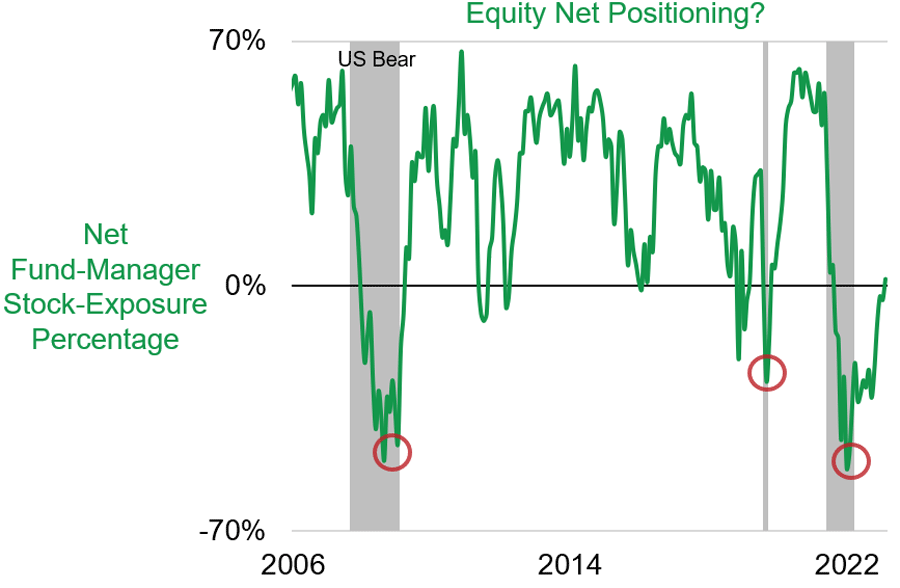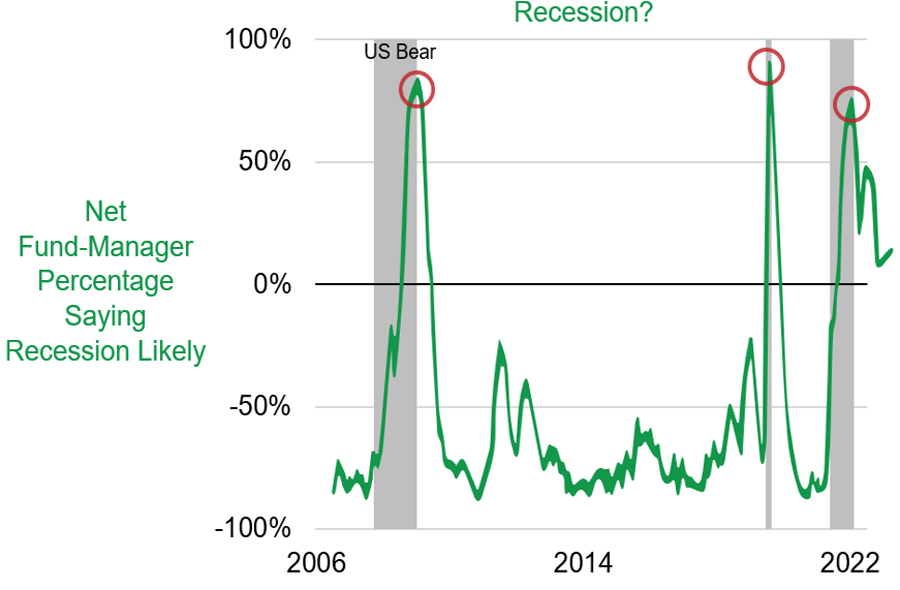Fisher Investments Reviews How Investors Feel About Stocks (And Why It Matters for Markets)

Fisher Investments Market Perspectives
By Fisher Investments — 12/4/2023
If you’re like most investors, your enthusiasm for stocks can shift between cynicism and confidence. How investors feel about stocks—what we call “investor sentiment”—can be a key driver in where markets move next. As Fisher Investments’ founder, Executive Chairman and Co-Chief Investment Officer Ken Fisher quotes in his recent video “Ken Fisher Reviews Investor Sentiment,” Sir John Templeton famously described how investor sentiment typically evolves: “Bull markets are born on pessimism, grow on skepticism, mature on optimism and die on euphoria.” In our view, stock markets move most on surprises—the disconnect between investor expectations and reality. If economic reality exceeds dour expectations, stocks can jump. In this article, we’ll explain how to gauge investor sentiment and why its current state can be a powerful indicator of where markets move next.
The Market Sentiment Life Cycle in Action
True to Templeton’s adage, the early stages of a bull market are often accompanied by investor fear, leftover from the previous bear market. As a new bull market gains steam and stock prices begin to rise, pessimism shifts to skepticism. At this stage, even as fundamentals start improving, investors tend to dismiss any good news or interpret it as bad—a concept Ken Fisher calls the “pessimism of disbelief.” As the bull market evolves and companies continue to beat overly dour expectations, more investors step into the market and prices rise—creating optimism. Finally, at the end of a bull market, euphoria can sweep investors, leading them to throw caution to the wind and look for the next hot investment—dismissing deteriorating economic fundamentals that may indicate a bear market could be around the corner. (Exhibit 1)
Exhibit 1
As an example, let’s observe the evolution of investor sentiment during 2022 and 2023. Investor sentiment soured throughout 2022—reaching levels of pessimism often seen around a bear market’s end and new bull market’s beginning. Sentiment seemingly warmed in early 2023, but March’s bank failures whacked sentiment anew. During summer 2023, the market rally got a bit more love, but negative volatility since August has heightened many fears over China’s economy, long yields, the US federal budget deficit, government shutdowns, oil prices, labor strikes, tapped out consumers, geopolitical conflicts and more. Current investor sentiment seems quite skeptical in our view, which is consistent with an early bull market.
Don’t Let Bricks in the “Wall of Worry” Push You Off Course
It may seem easy to ride a bull market and realize impressive returns, but many investors often fall prey to headline-grabbing fears. Scary things are a constant in the world, forming the proverbial “wall of worry” bull markets love to climb. Pervasive worries lower the bar reality needs to clear to positively surprise. Thus, far from stopping a bull market, widespread fears are more often part of its fuel. Global stock performance from March 2009 to January 2022 is a good example (Exhibit 2)—stocks returned a cumulative 507%*, overcoming many market fears and alarming events along the way including slow economic growth, regional wars, tightening monetary policy, contentious elections, a global pandemic and more.
Exhibit 2
*Source: FactSet, as of 2/3/2023. MSCI World Total Return (Net) from 12/31/2008 – 1/4/2022.
Gauging Investor Sentiment
Investor sentiment doesn’t evolve in a linear fashion and measuring sentiment can be tricky—part science, part art form. While there’s no shortage of sentiment indicators including investor surveys, media coverage, company valuations, consumer confidence reports, professional forecasts and investor fund flows, below are two examples to demonstrate how pessimistic investors felt near the end of 2022.
In 2022, investor sentiment deteriorated towards record levels of pessimism across a variety of indicators. Net equity positions—the amount of stock market exposure professional investment managers hold at any given point—dropped to their lowest level in about 20 years (Exhibit 3), while the majority of fund managers and advisors thought recession was likely (Exhibit 4). As the charts show via gray shaded regions and red circles, more extreme sentiment measurements commonly occur near bear market troughs. We believe this illustrates how bull markets often are born on pessimism and aligns with October 2022 likely representing the bear market low. These indicators have recently been recovering from their more extreme readings, which also commonly occurs as a new bull begins.
Exhibit 3


Source: FactSet, Bank of America (BAC), as of 9/28/2023. Global Fund Managers Survey (Used with permission. Use in no way implies that BAC or any of its affiliates endorse the views or interpretation of the information. Use does not act as any endorsement. The information is provided “as is.”). Equity net positioning, monthly, 1/1/2006 – 9/12/2023 and net percentage saying recession likely monthly, survey periods 2006 – 8/10/2023.
What Does Current Sentiment Say About the Future?
Overall, we have seen a thawing of sentiment as persistent economic fears have begun to ease; for example, inflation decelerating from 2022’s highs and corporate earnings positively surprising in 2023. However, as Ken Fisher shared in his recent article, “Worried about jobs? Inflation? The Fed? Let’s talk reality,” few are extrapolating a super-sunny outlook. We believe this is consistent with a young bull market, in which sentiment is between pessimism and skepticism—leaving more room for this new bull market to run.





